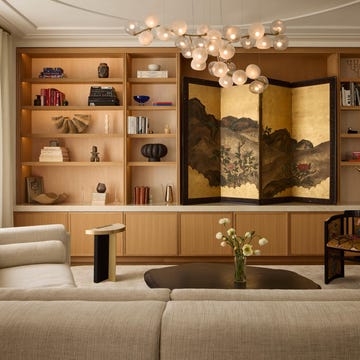One of the most common forms of housing stock in Britain is the Victorian semi-detached and architects and designers are always seeking innovative ways to make its footprint fit for modern living.
In the case of this home in the leafy London suburb East Dulwich, things were even trickier thanks to its awkward end-of-terrace plot, but architect Benjamin Hale worked closely with its owner, Daniel Jones of design studio Hamish Vincent to devise a solution that is as elegant and contemporary as it is functional.
The initial brief was to extend, perhaps adding another bathroom and bedroom above the ground floor. By utilising an underused area of the garden and staying within the original footprint, Ben designed a pale brick side extension and zinc-clad dormer loft extension that added two bedrooms and a dining space.
What's everyone reading?
He and Daniel also reconfigured all the internal spaces. ‘We never start with a specific aesthetic in mind. Instead, we strive to blend old and new, choosing materials that respect the age of the home while referencing the time period in which changes were made. The mood is derived from these decisions.’
‘Dan has renovated quite a few homes,’ continues Ben, adding ‘he has an incredible eye for detail, which is what initially brought us together. We share a deep appreciation for period homes and the creative possibilities that arise from such collaborations. We were inspired by the ornate detailing of some of the Victorian villas and we aimed to respectfully reinstate these elements.’
Getting natural daylight deep into the kitchen was a challenge, but perhaps resulted in the new home’s most striking and satisfying design feature: a wall of Crittall glazing facing the street. This bathes the kitchen in sunshine while maintaining a sense of privacy. ‘Friends and passers-by have commented that this is a lovely touch, creating a fitting end to the terrace’ Ben says.
He prides himself on designing homes that resonate with a sense of permanence and timelessness. ‘It’s tricky to describe exactly what this means, but when we approach a project, we first aim to understand the history of the home, explore why alterations were made, and use the original footprint as a starting point. This helps us establish a hierarchy: which elements to preserve, which have been lost and can be reinterpreted, and which areas could benefit from contemporary intervention.’
His studio carefully considered the transitions between different materials and heights within the spaces, using a restrained material palette of oak, render, brick, clay plaster, and Italian terrazzo to create a new language within the home, helping to define spaces and activities while referencing the past. Joinery adds an additional layer of warmth and tactility while remaining functional.
The new extension exists in happy dialogue with the original house, ‘almost like a little brother to the original structure’ as Ben puts it. Its owner couldn’t be happier with how things turned out. ‘I think Daniel is still smiling! He’s done a great job and should be proud.’ benjaminhale.co.uk @hamishvincentdesign




















